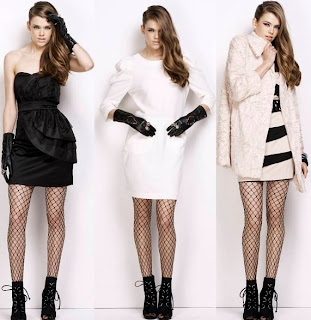A skirt is a tube- or cone-shaped garment that hangs from the waist and covers all or part of the legs.
In the western world, skirts are usually considered women's clothing. However, there are exceptions. The kilt is a traditional men's garment in Scotland, and some fashion designers, such as Jean-Paul Gaultier, have shown men's skirts.
At its simplest, a skirt can be a draped garment made out of a single piece of material but most skirts are fitted to the body at the waist and fuller below, with the fullness introduced by means of dart, gores, pleats, or panels. Modern skirts are usually made of light to mid-weight fabrics, such as denim, jersey, worsted, or poplin. Skirts of thin or clingy fabrics are often worn with slips to make the material of the skirt drape better and for modesty.
The hemline of skirts varies according to the personal taste of the wearer which can be influenced by such factors as social context, fashion, and cultural conceptions of modesty.
Some medieval upper-class women wore skirts over three metres in diameter at the bottom. At the other extreme, the miniskirts of the 1960s were minimal garments that may have barely covered the underwear when seated.
Costume historians typically use the word "petticoat" to describe skirt-like garments of the 18th century or earlier.
A straw-woven skirt dating to 3,900 B.C. was discovered in Armenia Skirts have been worn by men and women from many cultures, such as the lungi, kanga and sarong worn in South Asia and Southeast Asia, and the kilt worn in Scotland.
The earliest known culture to have females wear clothing resembling miniskirts were the Duan Qun Miao, which literally meant "short skirt Miao" in Chinese. This was in reference to the short miniskirts "that barely cover the buttocks" worn by women of the tribe, and which were "probably shocking" to observers in medieval and early modern times.
Skirts in the 19th century
During the nineteenth century the cut of women's dresses in western culture varied more widely than in any other century. Waistlines started just below the bust and gradually sank to the natural waist. Skirts started fairly narrow and increased dramatically to the hoopskirt and crinoline-supported styles of the 1860s; then fullness was draped and drawn to the back by means of bustles.
Skirts in the 20th and 21st centuries
Beginning around 1915, hemlines for daytime dresses left the floor for good. For the next fifty years fashionable skirts became short (1920s), then long (1930s), then shorter (the War Years with their restrictions on fabric), then long (the "New Look"), then shortest of all from 1967 to 1970, when skirts became as short as possible while avoiding exposure of underwear, which was considered taboo.
Since the 1970s and the rise of pants for women as an option for all but the most formal of occasions, not one skirt length has dominated fashion for long, with short and ankle-length styles often appearing side-by-side in fashion magazines and catalogs.


















































No comments:
Post a Comment